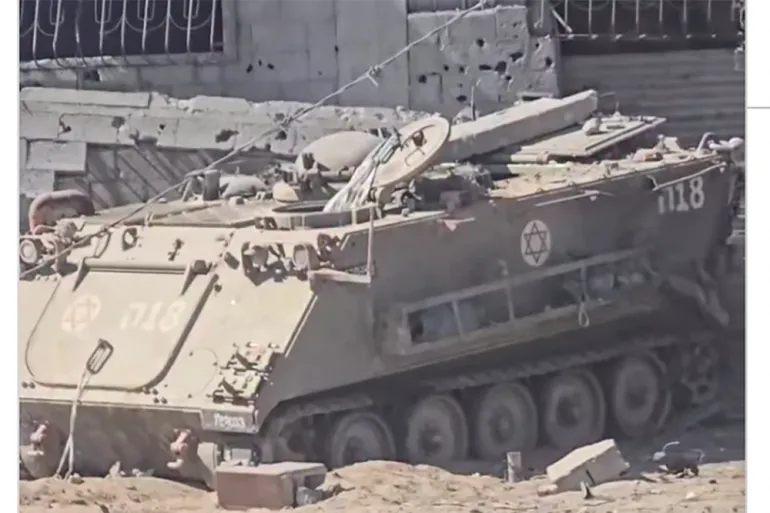
As the ceasefire between Israel and Hamas brought some respite to Gaza, residents returning to their homes discovered a lingering threat: Israeli explosive robots left scattered among the rubble of flattened neighborhoods. These remotely controlled devices have caused widespread destruction, leaving survivors fearful and uncertain about their safety.
Explosive Robots: A New Threat in Gaza
The “robots” first appeared in northern Gaza, including Jabalia refugee camp, in May 2024. According to the Euro-Med Human Rights Monitor, their deployment escalated dramatically leading up to the October ceasefire, destroying up to 300 residential units daily in Gaza City and Jabalia.
The devices are armored carriers loaded with explosives and dragged into place by bulldozers. Once positioned, the soldiers retreat, and the robots are remotely detonated, obliterating entire residential blocks.
Mahmoud Basal, a spokesperson for Gaza City Civil Defence, explained that the destructive “kill radius” of these robots can extend up to 500 meters (550 yards), causing catastrophic damage to infrastructure and homes.
Personal Accounts of the Destruction
Residents describe the terror of encountering these devices firsthand. Sharif Shadi, 22, from Jabalia camp, recounted seeing a robot being dragged into his neighborhood:
“I ran at least 100 meters (110 yards) when the explosion occurred. Those closer … nothing remained of them.”
Um Ahmed al-Dreimli, a 50-year-old Gaza resident, described the lingering effects of the explosions:
“The toxic vapors and gases … made breathing extremely difficult. The smell of gunpowder and burned metal clung to our lungs long after the explosion.”
Medical and Environmental Consequences
Dr. Mohammed Abu Afash, director of the Palestinian Medical Relief Society, noted that exposure to fumes from the robots has led to repeated cases of respiratory distress, suffocation, and chemical inhalation, adding another layer to the humanitarian crisis.
Strategic Use by Israeli Forces
According to Mohammed Abu Tamous of the Civil Defence and Ambulance media department, these robots are used in preparation for ground invasions, erasing landmarks and leveling entire neighborhoods to allow Israeli forces to advance. Areas affected include:
- Jabalia Camp
- Beit Hanoon
- Tal az-Zaatar
- Beit Lahiya
- Shujayea
- Sheikh Radwan
- Abu Iskandar
- Tuffah and Zeitoun
Unlike airstrikes, these robots can destroy entire rows of 10 adjacent houses, preventing rescue teams from reaching affected residents and leaving streets unrecognizable.
Unexploded Devices Pose Ongoing Risk
Even after the ceasefire, unexploded robots remain a threat. Civil defense teams often lack the specialized equipment to safely dismantle these devices. Residents are warned to avoid them, but the danger persists, adding to the uncertainty and trauma of returning home.
International Response and Legal Concerns
Reports from human rights monitors categorize the use of explosive robots in densely populated civilian areas as potentially prohibited weapons, and their deployment may constitute war crimes and crimes against humanity. The Israeli military has not publicly acknowledged the use of these devices.
Gaza Faces a Long Road to Recovery
While the ceasefire allows some return of displaced residents, the presence of explosive robots, coupled with destroyed infrastructure and toxic fumes, highlights the ongoing humanitarian crisis in Gaza. Survivors continue to navigate a landscape of fear, destruction, and uncertainty as they attempt to rebuild their lives.
Leave a Reply